Our Blog - Milan Day 2
After a good breakfast, we caught the metro to Piazza del Duomo, the main square. Duomo is Cathedral, so this is Cathedral Square. The square looks very different than when it was initially laid out in the 1330's and then it changed again in the 1450's when the Duomo construction started. It got changed again after Italy's independence in 1859, to celebrate King Vittorio Emanuele II. The two the main additions were the statue of the King, and the Galleria Vittorio Emanuele II.



Here is the statue in the center of the square. King Vittorio Emanuele II was King of Sardinia from 1849 until the creation of Italy in 1861. At that point, he assumed the title of King of Italy and became the first king of a united Italy since the 6th century, a title he held until his death in 1878.

Named for him is the Galleria Vittorio Emanuele II. It is listed as the world's oldest shopping mall, having been designed in 1861 and built from 1865 to 1877. The structure consists of two glass-vaulted arcades intersecting in an octagon, covered by an arching glass and cast iron roof. As you can see, the exterior looks like an Arc de Triomphe. Our tour guide mentioned that originally, it was lit by gas lights and around the top of the dome was a little train track and a train that would go around at dusk and light the gas lights ... it was nicknamed "the mouse" because from the ground, it looked like a mouse running around the circle.
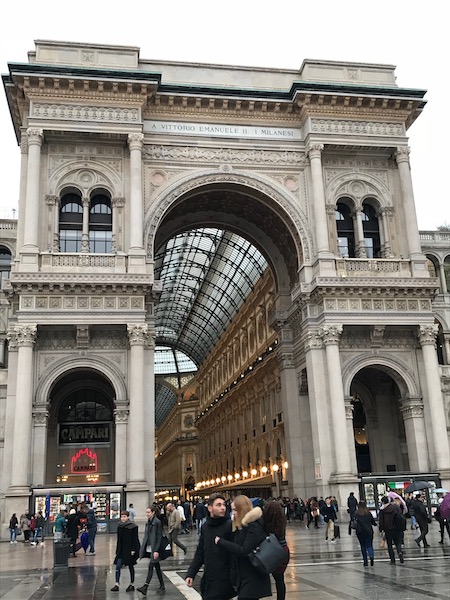

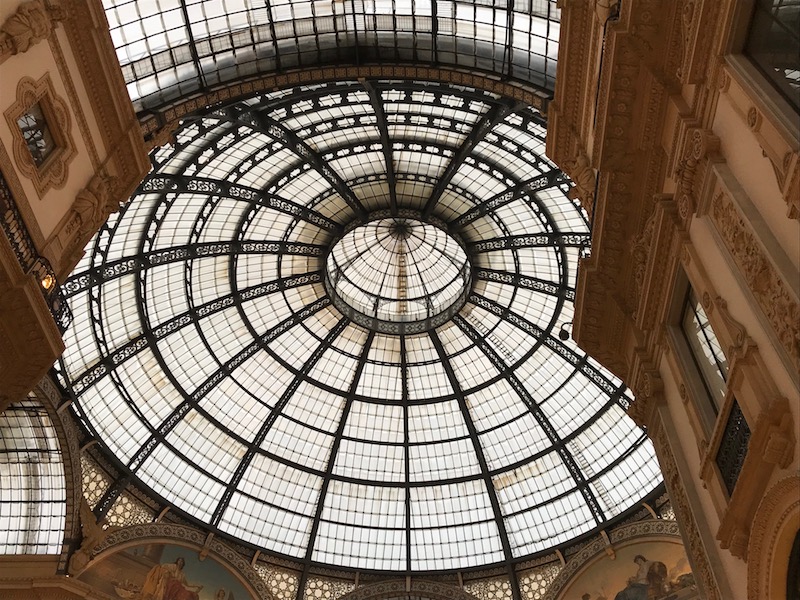


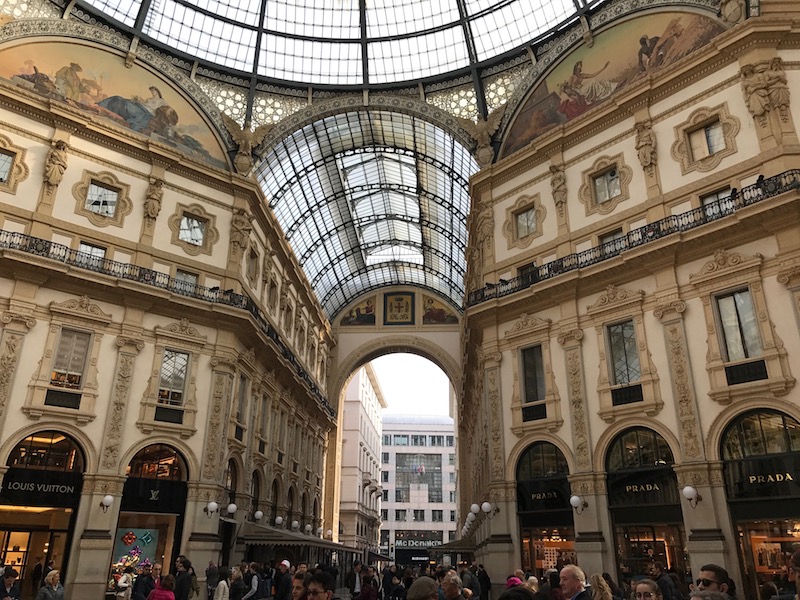
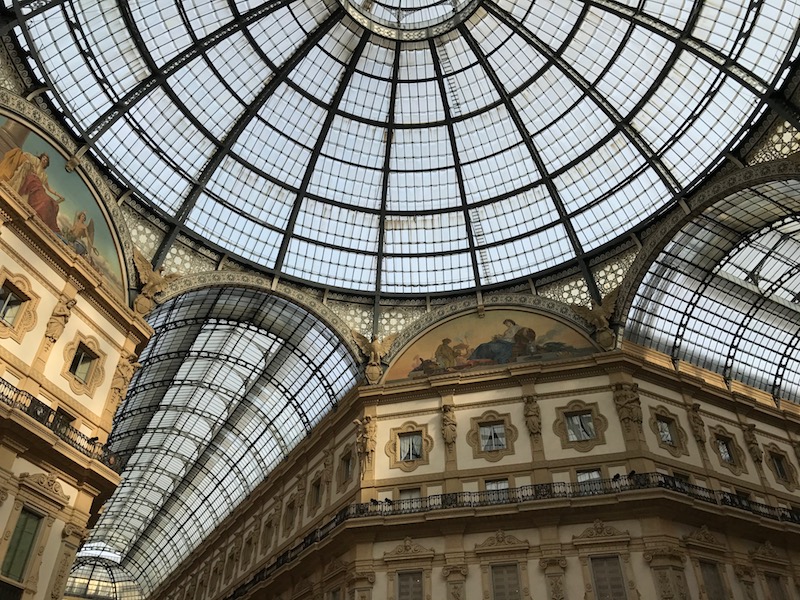
Around the octagon in the middle are paintings. Four distinguished painters, Casnedi, Pagliano, Giuliano, and Pietrasanta, using the fresco method, painted four large allegorical paintings representing the parts of the world. Angelo Pietrasanta was assigned Europe, depicting her with a severe look, her tools of human knowledge, which a winged genius equipped with laurel is guarding, as a reminder to the ancient civilization (this is the first picture). Asia was done by Bartolomeo Giuliano, showing Asia seated on her throne while receiving the homage of a Mandarin man escorted by picturesque natives (this is the second picture). For the Americas, Raffaele Casnedi, painted a matronly feathered America pictured between native Americans and African-American slaves. Finally, Eleuterio Pagliano entrusted the portrayal of Africa to the prosperous appearance of an ancient Egyptian woman, standing between rich and Nilotic crops and the profile of a tamely bold lion. I didn't get pictures of these last 2.

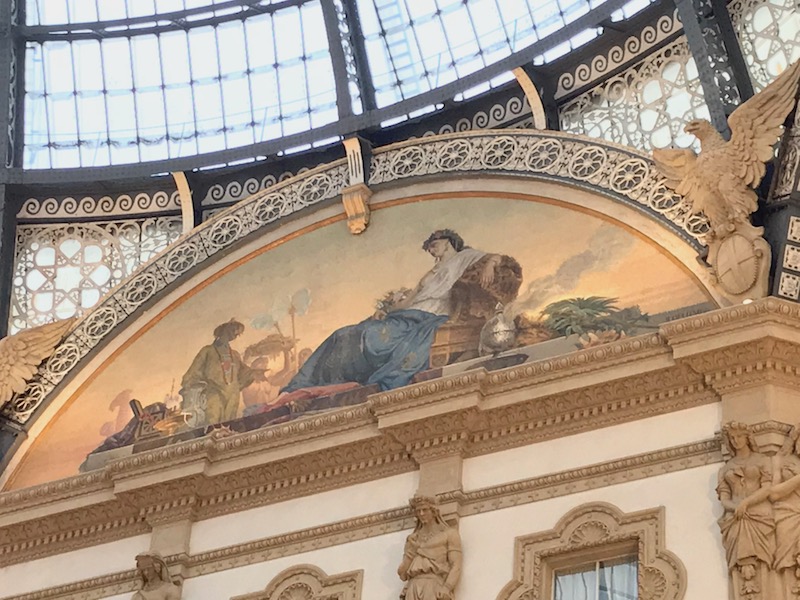
On the ground of the central octagonal, there are four mosaics portraying the coat of arms of the three capitals of the Kingdom of Italy (Turin, Florence and Rome) plus Milan's ... this one is Milan's. Tradition says that if a person spins around three times with a heel on the testicles of the bull from Turin coat of arms this will bring good luck. Needless to say, I took my turn.

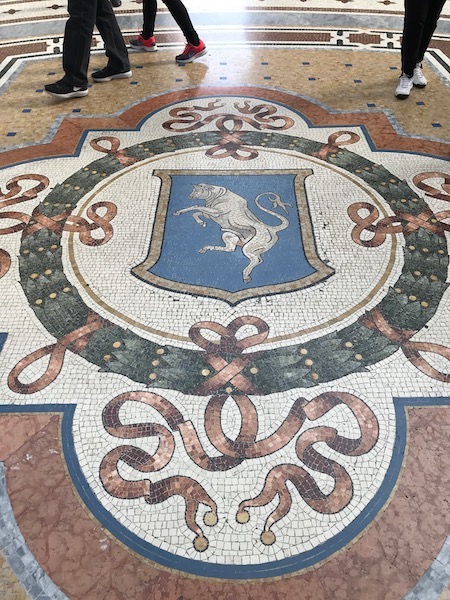
Here is the same square and the Galleria at night.



This is our attempt to see the Alps. They were actually fairly visible with the naked eye, but not so visible in the photos. If you find the 2 largest towers near the middle and look just to the left, you can make out the faint outline of the Alps, just about tower-top level. Some of them, you could clearly see the snow on top.

This emblem on the side of a building is called 'biscione', although some in Milan call it either simply the snake or the viper. The emblem shows a viper consuming a human .. and was the emblem of the House of Visconti starting in the 11th century. Since the Visconti family ruled Milan for several centuries, it has come to be known as an emblem of Milan. It is also used in the logo of Alfa Romeo (the right side, while the left side is the flag of Milan) as well as the Inter Milan soccer team.


We saw LOTS of churches .. the first being the Chiesa di Sant'Antonio Abate. One thing that our tour guide mentioned is that in Milan, many amazing things are hidden behind a very plain facade. This is because historically, Milan was a wealthy city but the people did not want to show their wealth. So they build very plain facades but then had AMAZING courtyards. The same occurred for many of the churches, where the exterior is very plain but you walk in and ... well ... WOW. This is one of those cases! Construction began on the church in 1582 on the site of an older church. The interior is richly decorated with almost every surface covered with sculptures, frescoes, and paintings. You can see the statue of Saint Anthony, almost always shown with a pig. He is the patron saint of domesticated animals, and is therefore often depicted standing next to a pig, which he supposedly healed.
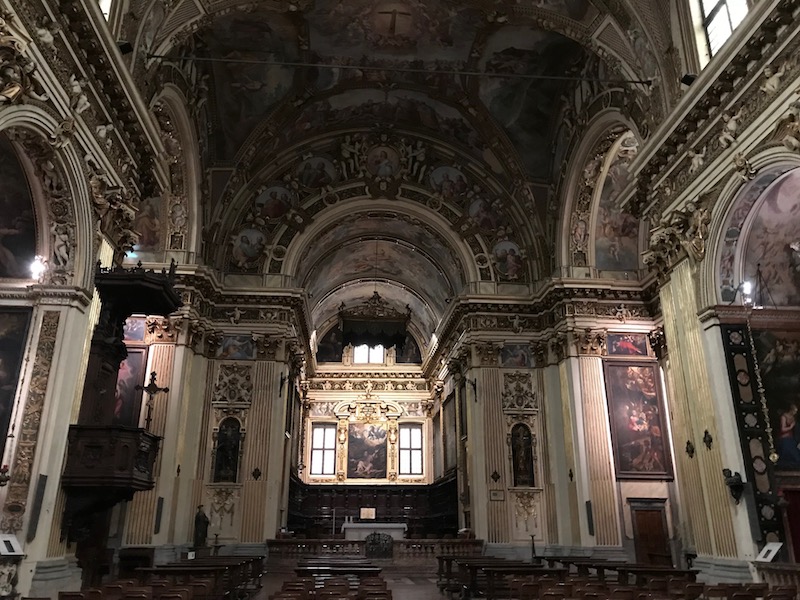
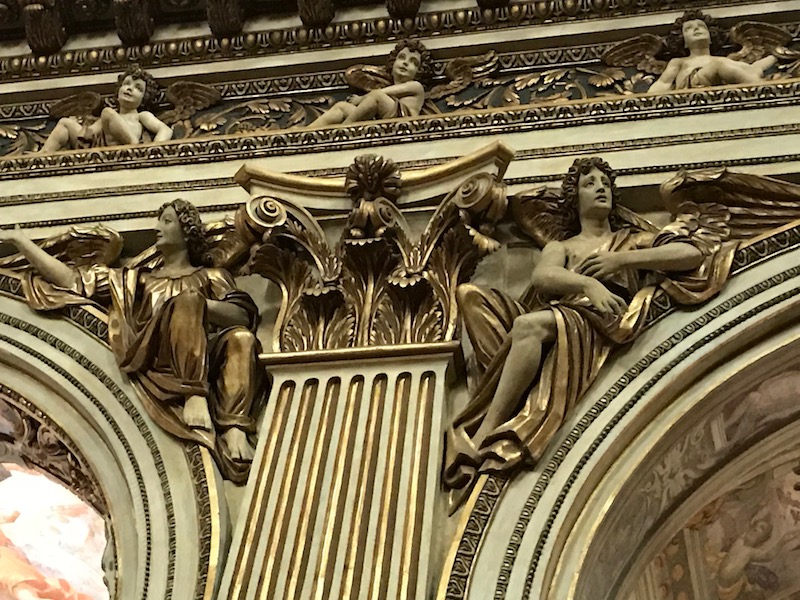

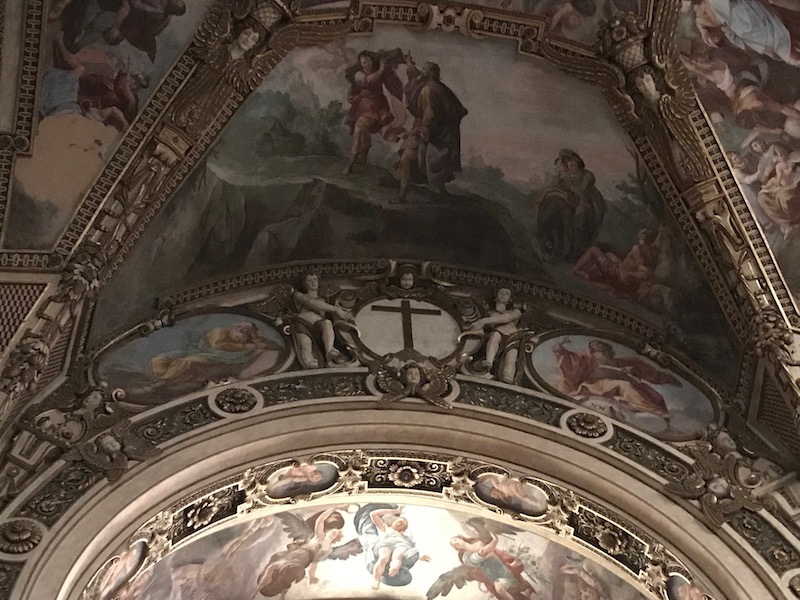



At the end of the Second World War, the Hospital for the Poor building, known as "la Cà Granda" (the Big House), was assigned to the University of Milan. The building dates to the 15th century and now houses the schools of Law and Humanities. This hospital was unique in a few ways: wards for the patients were separated according to diseases, and they actually attempted to cure some. Previously, hospitals were basically "hospice", where you go to die. Each ward had its own doctor and surgeon, and from 1558 on, there was a doctor on duty in the hospital 24 hours a day. The hospital had its own pharmacy and drug reference book. Our guide also mentioned that patients got fresh sheets, private beds, bathrooms, etc. Some of the poor tried to "get sick" so that they could go here. In the middle of the courtyard is a really nice lawn that nobody steps on except for 1 time ... their graduation day, when they hop over the shrubs onto the grass. Legend says that under the lawn was a former graveyard for those who died at the hospital and the students would avoid stepping on "a grave" as it is bad luck. So if a student stepped on the lawn (the grave), they would have bad luck which, for a student, meant they would fail. So once they graduate, they hop over the shrub onto the lawn because they can no longer fail at their studies there.
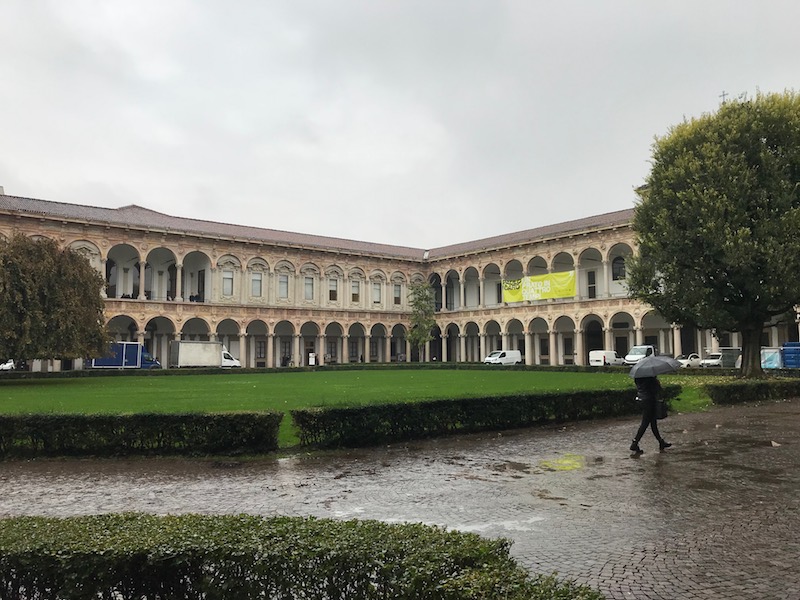

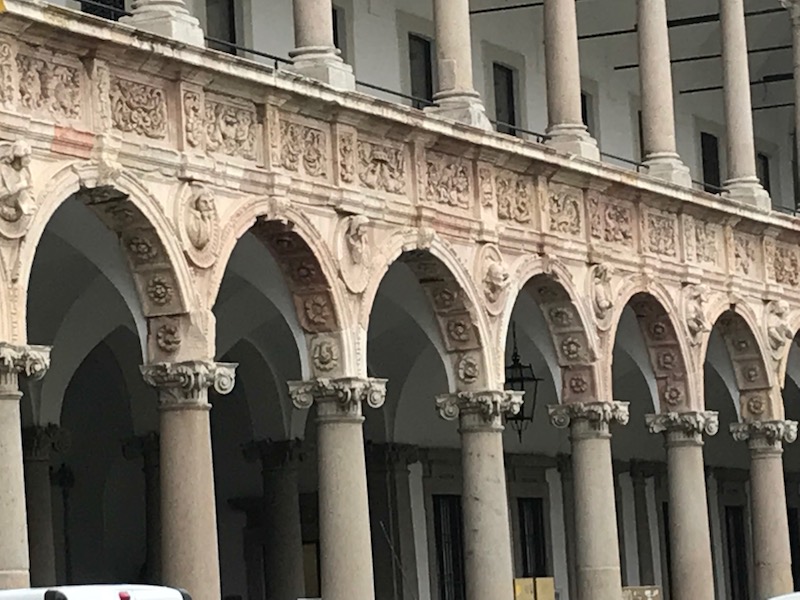
San Bernardino alle Ossa is best known for its ossuary, a small side chapel decorated with numerous human skulls and bones. The church's origins date to 1145, when a hospital and a cemetery were built in front of the basilica of Santo Stefano Maggiore. In 1210, a chamber was built to house bones from the cemetery, next to which a church was built in 1269. It was restored for the first time in 1679 by Giovanni Andrea Biffi, who modified the façade and decorated the walls of the ossuary with human skulls and tibiae. The ossuary's vault was frescoed in 1695 by Sebastiano Ricci with a Triumph of Souls and Flying Angels, while in the pendentives are portrayed the Holy Virgin, St. Ambrose, St. Sebastian and St. Bernardino of Siena. Niches and doors are decorated with bones, in Roccoco style. It is a bit ... interesting ... The guide mentioned that while today, this is a bit shocking ... back then, death was very common since the life expectancy was much shorter.

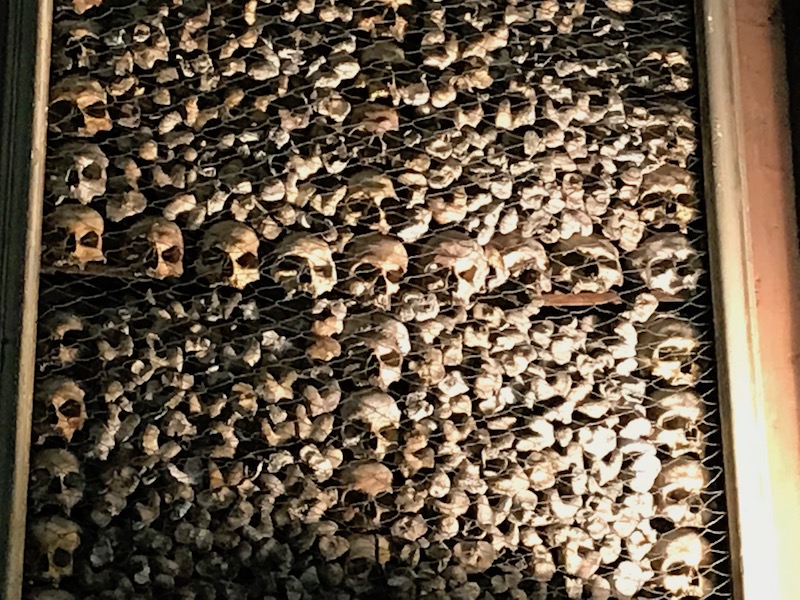

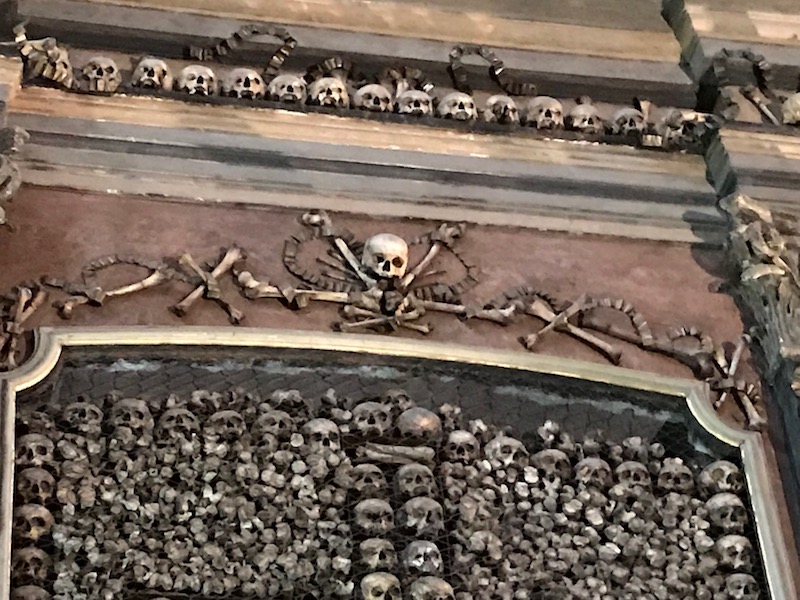
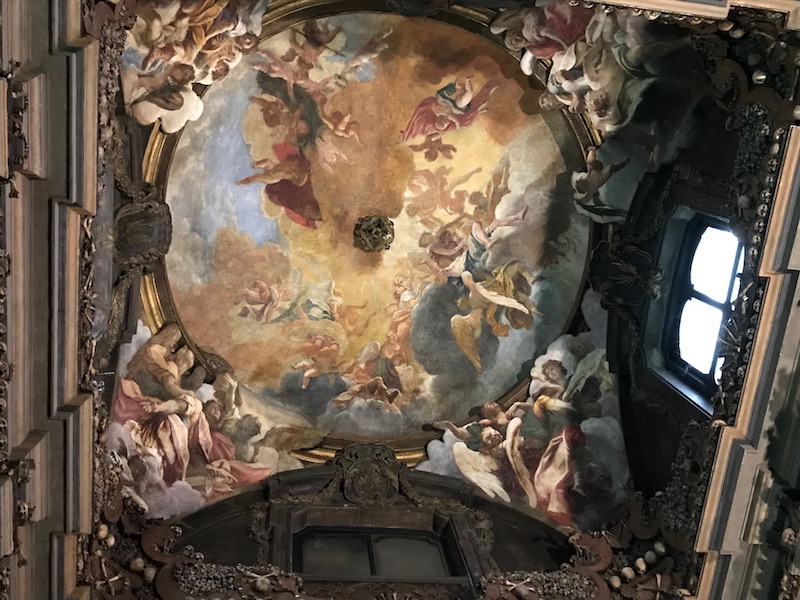

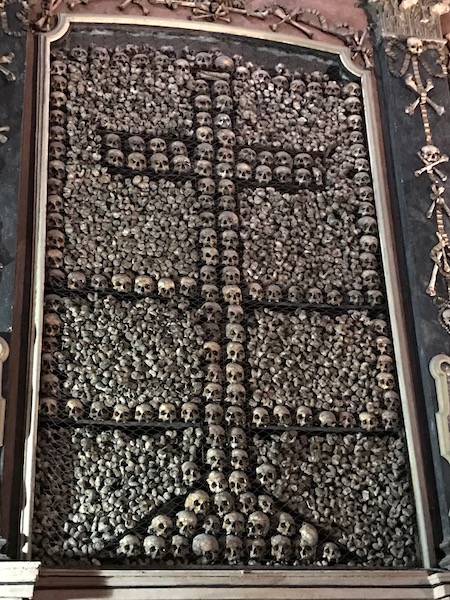
We stopped for a coffee break at Lavazza, which is a very famous coffee brand from Italy, dating back to 1895 and still run by the Lavazza family.
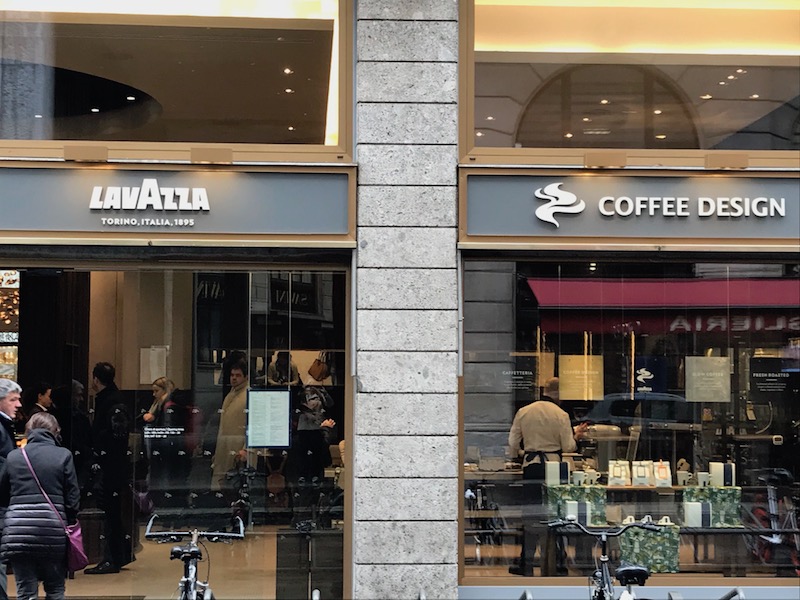
Market square, or Piazza Mercanti, dates back to the 12th century when it was the commercial center of the city. While all of the buildings were interesting, the Loggia degli Osii was the most interesting to me. It was built in 1321 for a lord of Milan ... one of the Visconti family. The balcony, decorated with an eagle holding prey (a symbol of justice) and two of the Visconti family emblem (the viper) was used by Milanese judges to proclaim various edicts. There is also a band with emblems of the districts (named after the six historical gates) of the city, those of the city itself Milan and the Visconti family emblems.
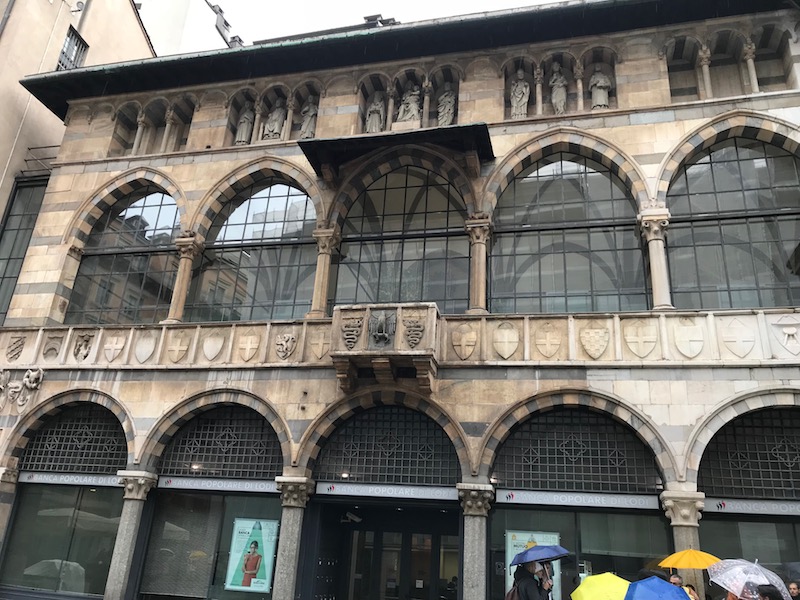
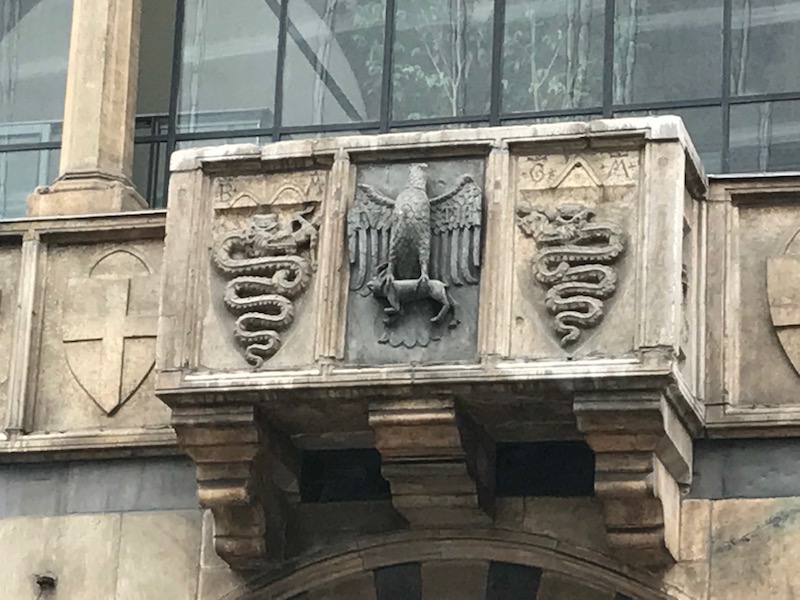

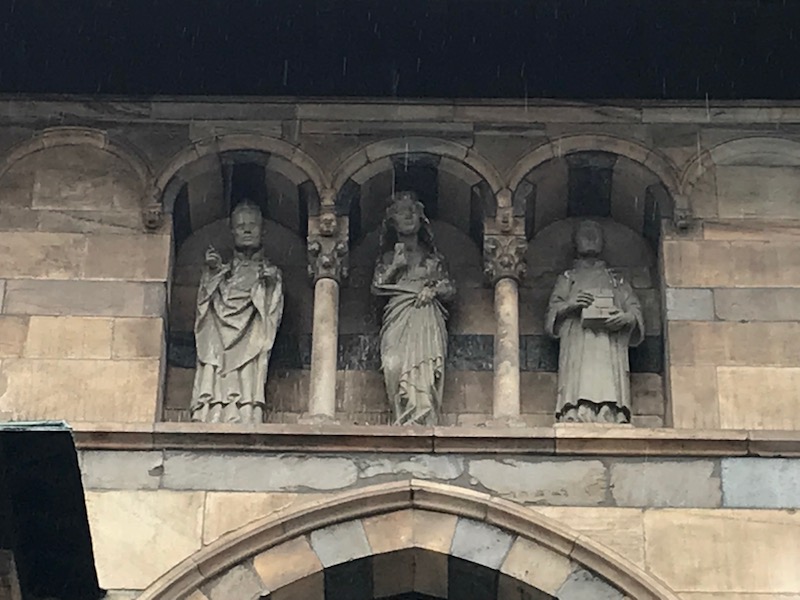



We asked our tour guide a recommendation for lunch, specifically "local", and he pointed us to Antica Osteria Milanese. Instead of the traditional risotto with saffron, he recommended risotto with sausage. You can only order it "for 2", so we both had it. It was pretty tasty, although it would have been nice to be able to try this as well as the risotto with saffron.

The Church of San Sepolcro was originally built in 1030 but has been modified multiple times. Returning from the First Crusade in 1099, the great grandson of the founder rebuilt the church to imitate the Church of the Holy Sepulchre of Jerusalem. The current Neo-Romanesque facade was completed in 1894-1897 and the interior dates back to 1713-1719. Inside, the decorations are quite muted (in comparison to some of the previous churches we were in).
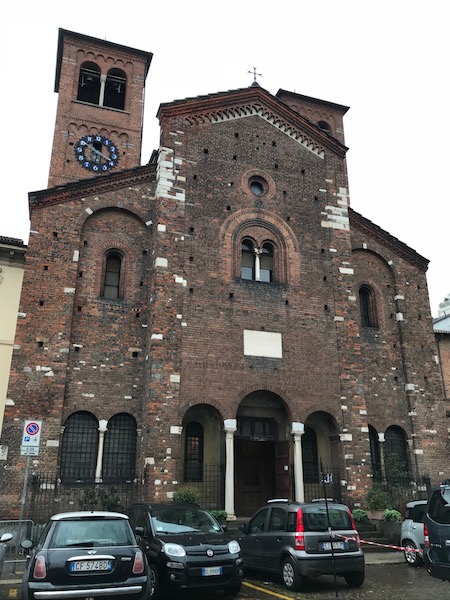

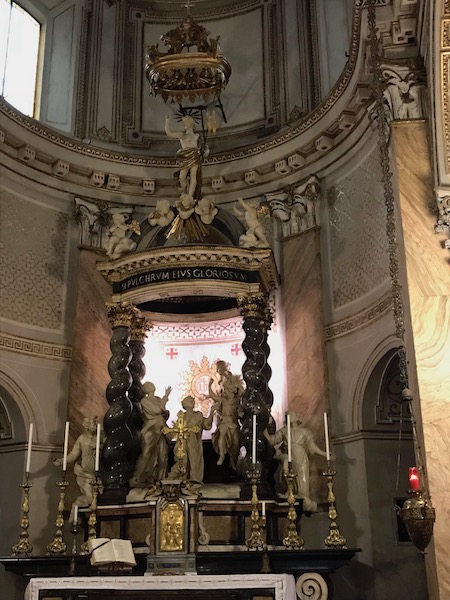
We actually don't know much about these, life-size statues depicting the Last Supper (specifically Christ washing the feet of his disciples) and Christ's trial.
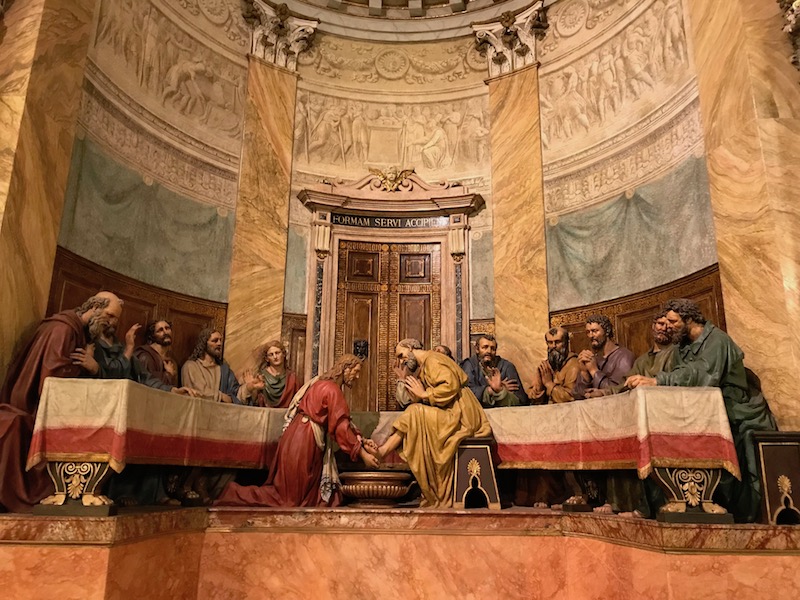

Palazzo Clerici, or Clerici Palace, is another hidden gem. Initially belonging to one of the Visconti family (remember them?), it was sold in 1653 to the Clerici’s, a family of silk merchants and bankers from Lake Como. It became one of the most sumptuous, luxurious residences in the city. It is now the Institute for International Political Studies and is normally not specifically "open" (they do tours on a regular basis I read somewhere). The door was open and so I went ahead and went through multiple rooms. Tom was a bit behind me and someone actually told him that they were setting up for an event (nicely telling him to leave). The exterior facade is again, fairly plain ... the courtyard is actually quite nice ... but the interior is another WOW moment. It starts as you hit the grand staircase.
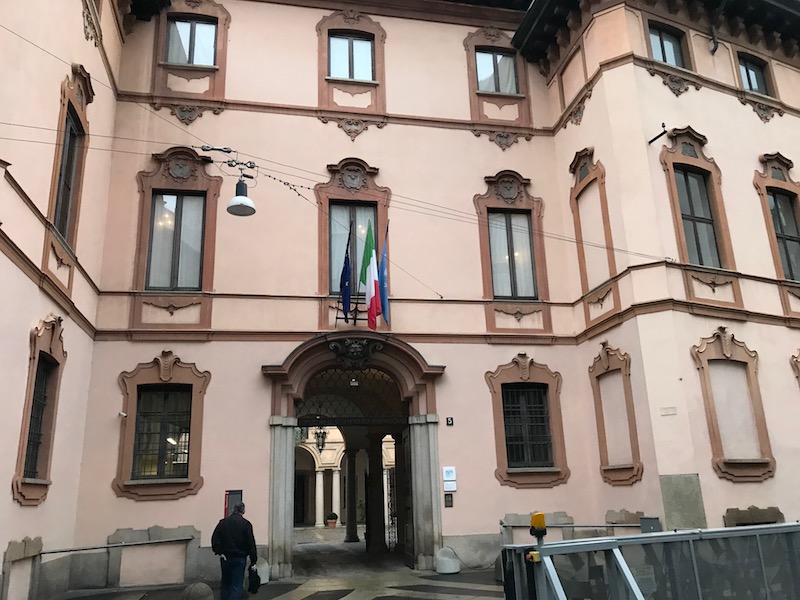

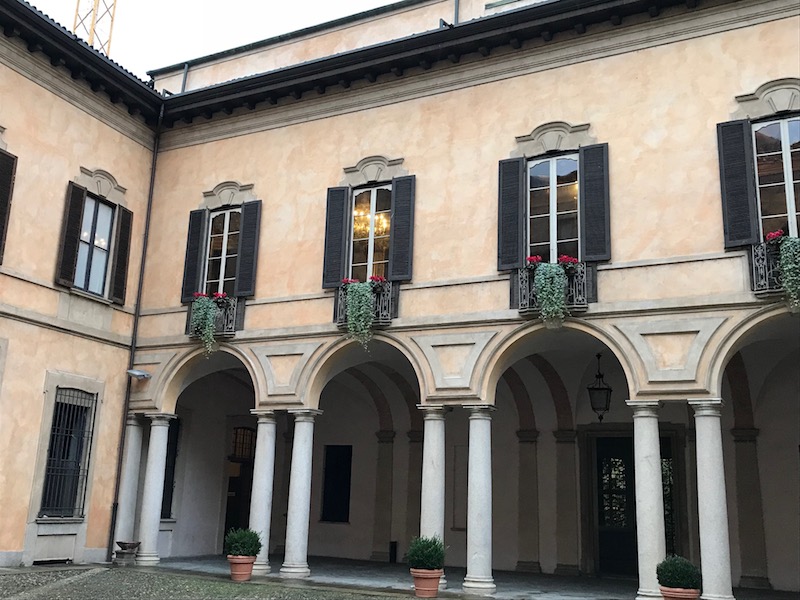

The first room, albeit a bit hard with my bad photography, has nice detail around the corners and the balcony on the 2nd floor.

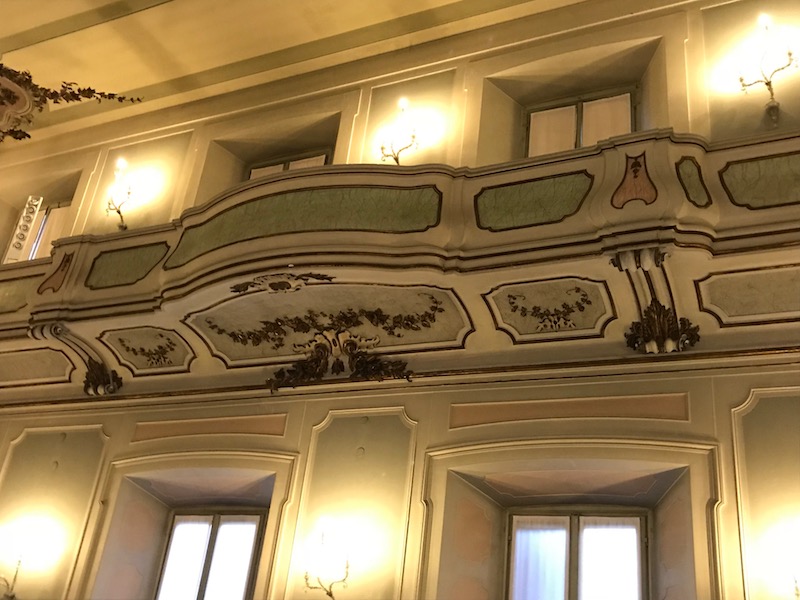
The next room was a bit more elaborate still, with more decorative corner elements as well as highly decorated doors.
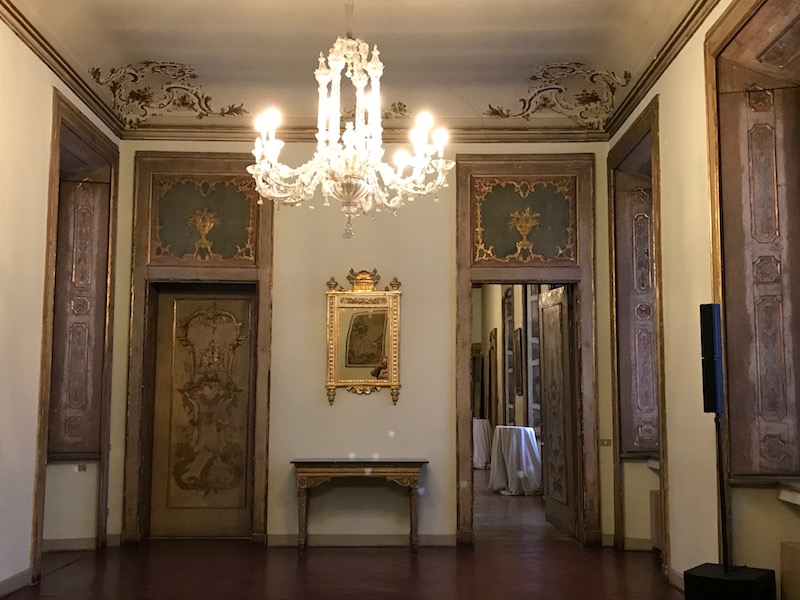
But the real treat was the last room I went into (before also being asked to leave), with a frescoed ceiling done in 1741 by Giambattista Tiepolo. The center of the fresco is dominated by the four-horse chariot of the Sun, preceded by the figure of the god Hermes as he leads the way across the heavens. However, the entire fresco is a whole of mythological figures, Olympic deities and allegories. Metaphorical elements range from the four parts of the 18th century known world, represented as horses for Europe, a mighty elephant for Africa, a pair of camels for Asia and a crocodile for the Americas. The walls intersperses mirrors with tapestries.

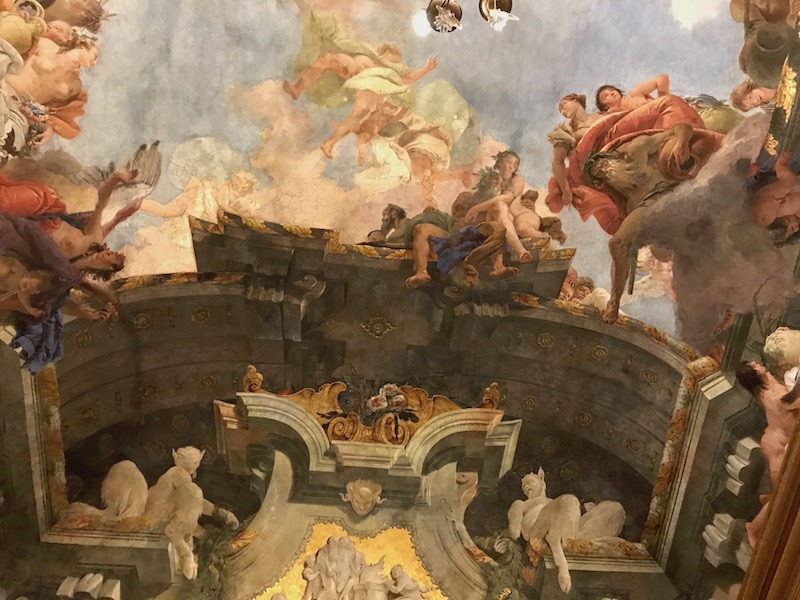
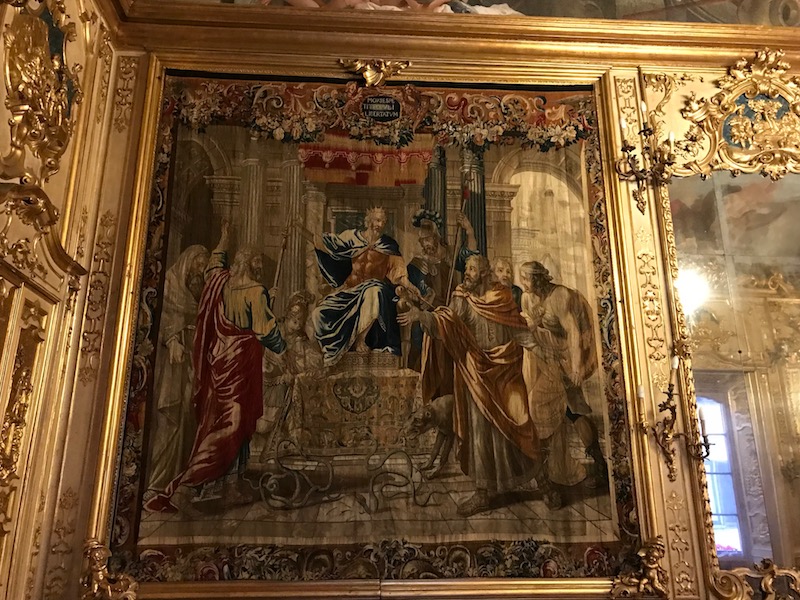
The opera house is the Teatro alla Scala. We didn't get to see inside and the outside is, well, pretty plain. But there is a lot of interesting info for this theater. The previous theater was destroyed by fire and so a group of 90 rich Milanese pitched in to build a new theater. The name comes from the church of Santa Maria alla Scala, which was demolished to build the theater. Our guide mentioned that originally, each owner got a box and that box was decorated however the owner wanted. So imagine a theater with 90 boxes, each decorated with different colors, patterns, materials, etc. She also mentioned that most people didn't actually watch the show, but were there to be seen, and to gamble (gambling was only allowed in the theater and only during the shows .. silly!). Eventually, all that changed and it was renovated to all look the same and gambling inside was outlawed. Most of Italy's greatest operatic artists, and many of the finest singers from around the world, have appeared at La Scala. The theatre is regarded as one of the leading opera and ballet theaters in the world.
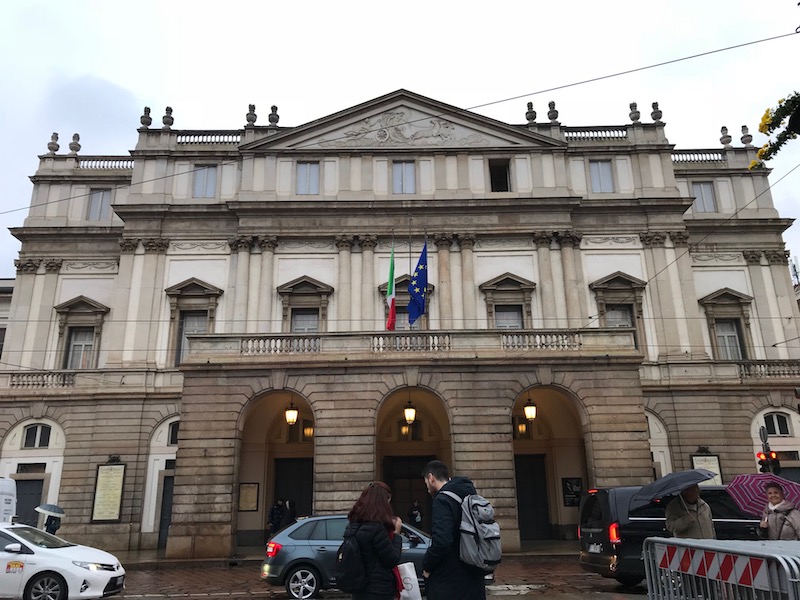
San Fedele is a Jesuit church, originally dating back to 313. Originally named Santa Maria in Solariolo, it was dedicated to Saint Fidelis in the 11th century. It was rebuilt in 2nd half of the 16th century although the facade dates only to 1835.





The Guastalla Chapel is a bit interesting. Done in a Baroque style, the centerpiece is flanked by 2 angels that seems to be supporting pillars that are unsteady and dislodged from the base, so that the main beam above the tympanum is kept straight.
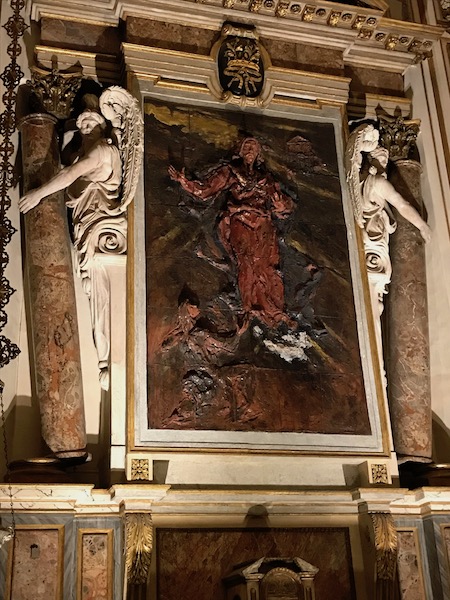
The Chapel of Deposizione contains two main things: the altar with a Cristo morto (or dead Christ) and a painting from 1584 entitled 'Pieta' by Simone Peterzano.
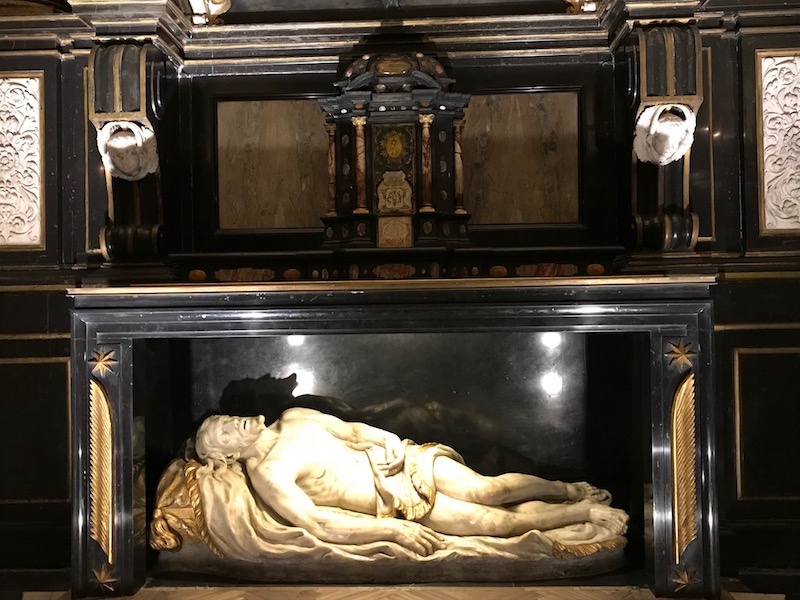

Lastly, the baptistry with a very nice bas-relief.


Casa del Manzoni is the Manzoni Museum, an elaborate ex-residence of Italian author and poet Alessandro Manzoni. Interesting link with the previous church, he died when he fell down the steps of the San Fedele church in 1873. Supposedly the interior is exactly as he left it, but we got there about 10 minutes after closing.
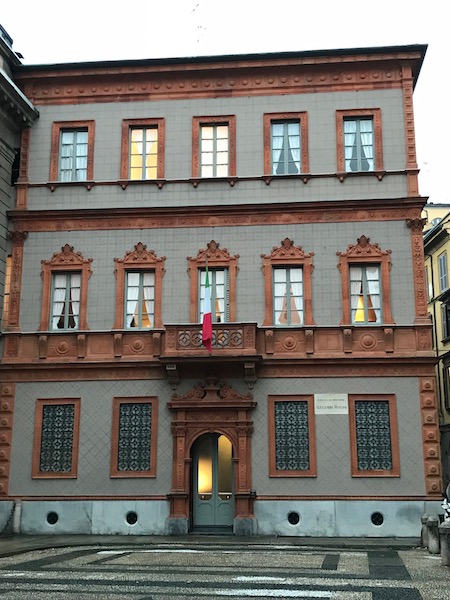
Another Valentina-recommendation, tonight was dinner at Botinero. The interior seemed to be conflicted ... nice, semi-high-end table settings but with TV's around the dining room showing soccer. More on the soccer later.
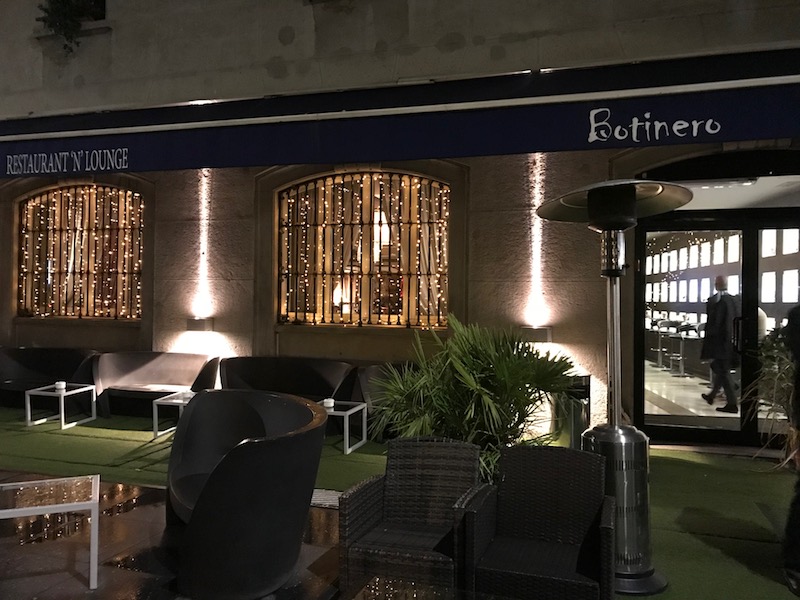
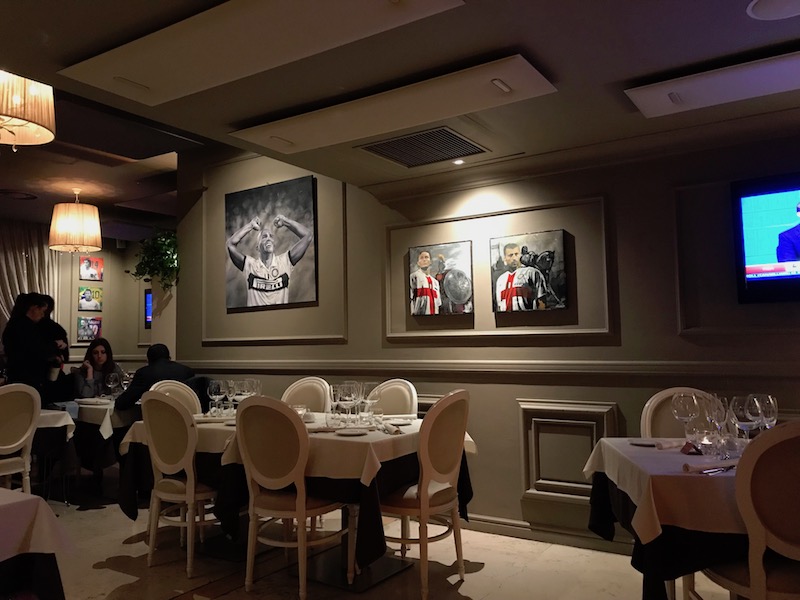
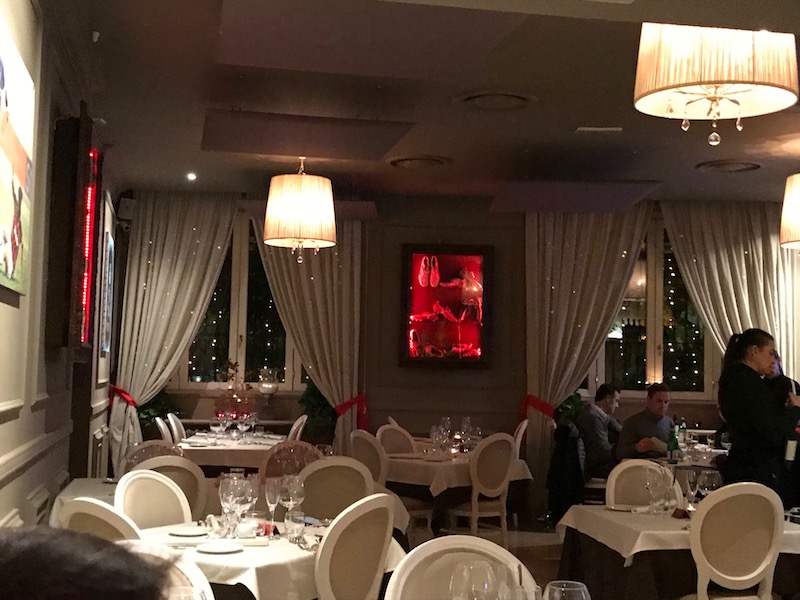
We started with a welcome drink (I assume Prosecco) and a small amuse bouche, presented in a small white spoon.

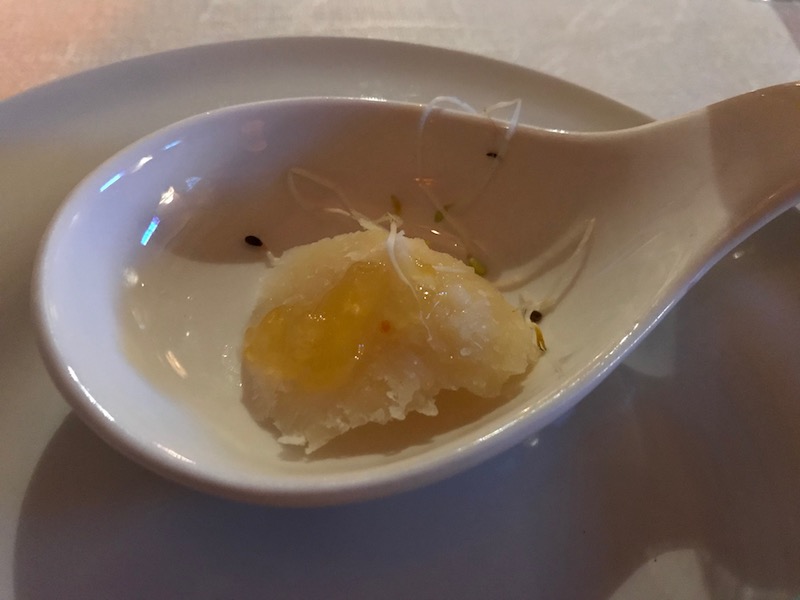
This night, we skipped the entree and went with 2 primi piatti's ... the linguini (I actually think it was more like spaghetti) pomodorini (tomato basil sauce) and another pasta with mushrooms and a cream sauce.


Mains ... I went with an Argentinian steak that they listed as a "Tagliata di angus" along with baked potatoes (again, served fairly on the rare side) and Tom went with the Milanese cutlet served with fresh rocket and cherry tomatoes. I had always known about "milanese" being a breaded flat cutlet but I never actually connected Milanese to Milan until now.
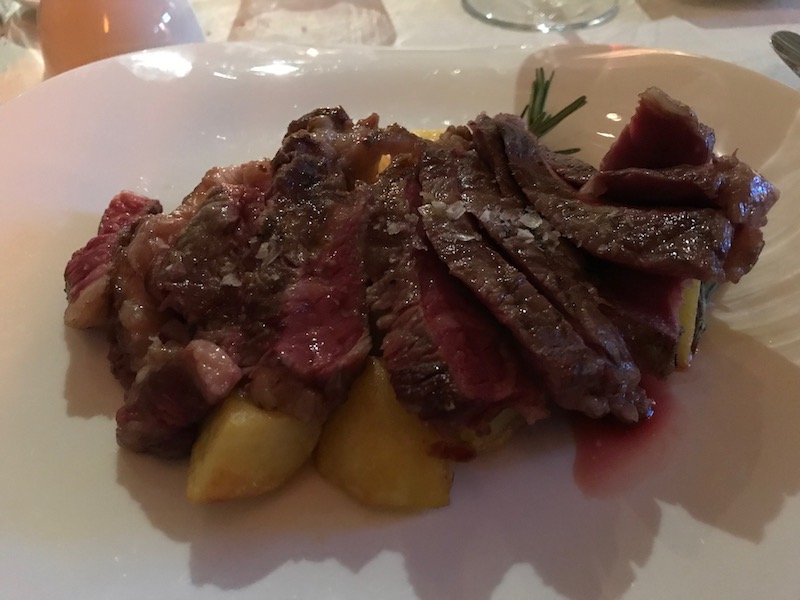
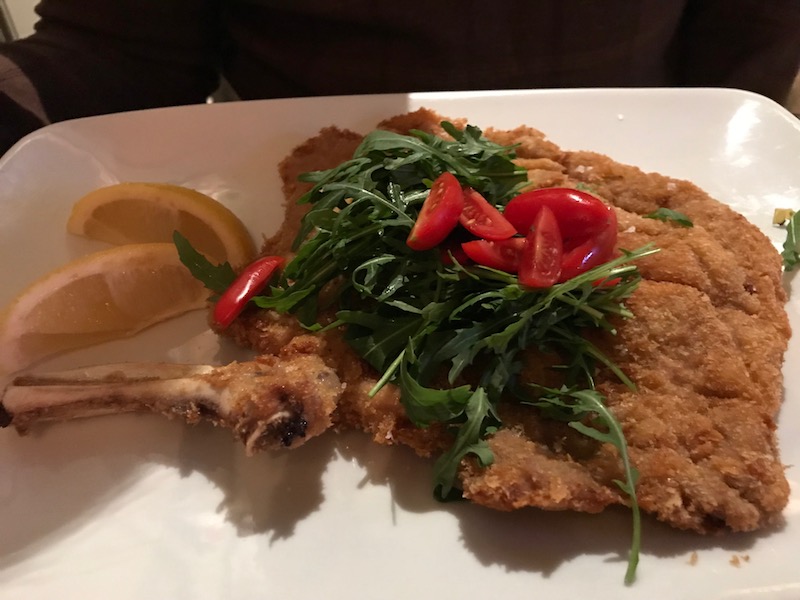
And lastly, dessert. Tom went with Tiramisu and I went with something a bit "less" Italian to me ... apple strudel (Italian style) with cinnamon ice cream. Interestingly enough, I have always thought I didn't like tiramisu but I had it a couple times recently and it is quite good ... I must have had bad tiramisu at some point in the past.
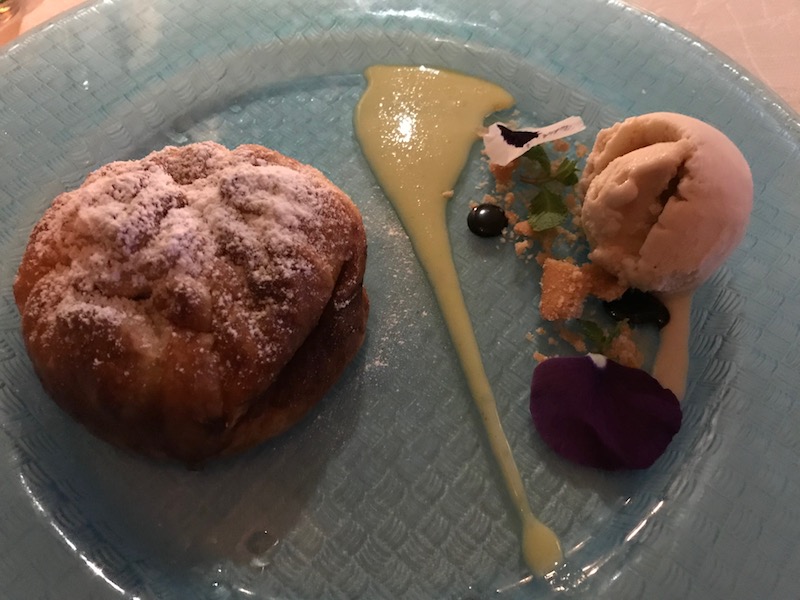

They then brought us a few more desserts with the coffee. I finished things off with a limoncello. We had tried some in Lyon (very very cold, from the freezer) and it was really good, so I thought I would have to try one in Italy. While it wasn't AS cold, it had the same very fresh lemon flavor that I like so much. This was probably one of our favorites .. everything was very good!
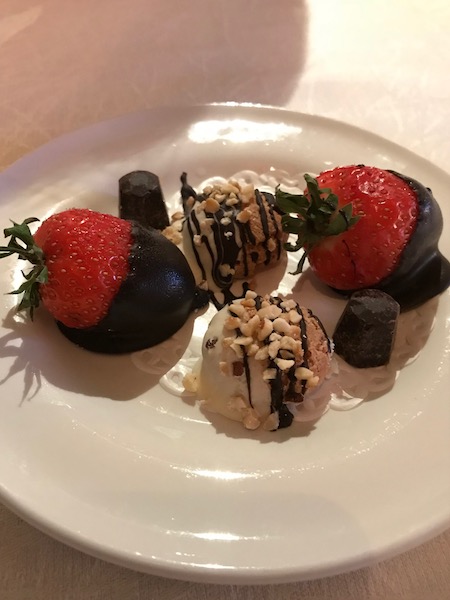

Now .. back to the soccer. As you can see from the decor on the walls in the first pictures, it is a soccer-themed restaurant. Along the whole wall when you enter are soccer shoes .. some of the former owners of those shoes I actually recognized, like Neymar and Messi. While we have no proof .. we hear that the restaurant is owned by the former soccer start, Javier Zanetti. Zanetti played 19 seasons for Internazionale ... known as InterMilan, or just Inter. At the opening celebrations for the Expo 2015 in Milan, Inter officially retired Zanetti's number 4 jersey.
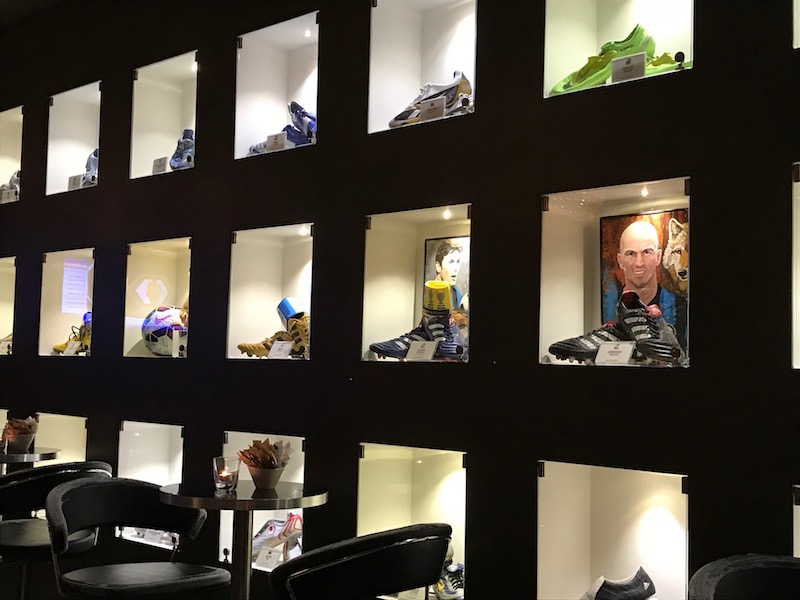

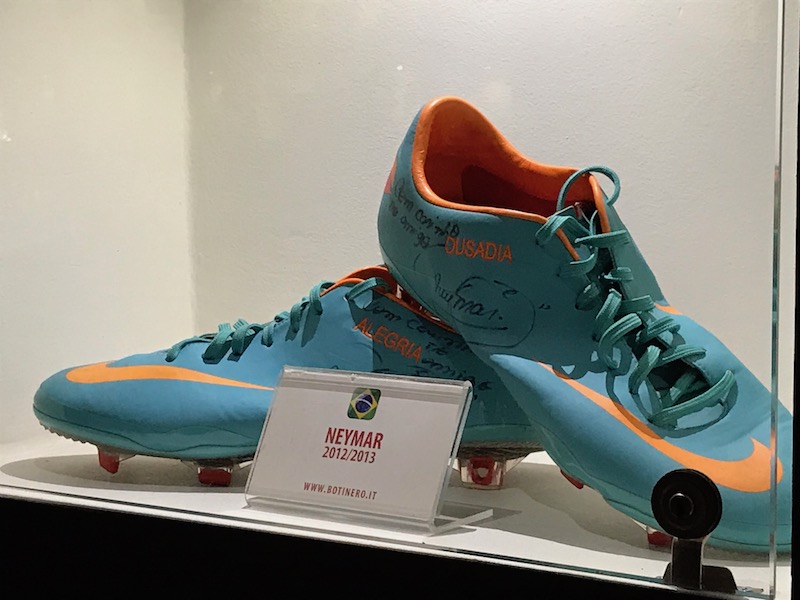
Go straight to Milan Day 3
Go straight to Milan Day 4
Go straight to Milan Duomo
Go back to the main Milan page
or go back to the main blog.